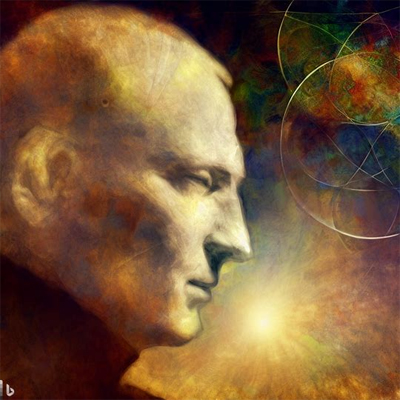Carl Jung’s Theory of Collective Unconscious: An Intersection of Psychology and Spirituality
Introduction:
Carl Gustav Jung, a Swiss psychiatrist and psychoanalyst, is one of the most influential figures in the field of analytical psychology. He proposed several groundbreaking theories, including the idea of the collective unconscious, a concept that has stirred significant interest, debate, and even controversy in psychology and beyond. This article aims to explore Jung’s theory of the collective unconscious, its components, implications, and criticisms.
The Collective Unconscious: A Definition:
The collective unconscious, according to Jung, is a universal datum, that is, every human being is endowed with this psychic archetype-layer since his/her birth. It is not developed individually but is inherited, consisting of pre-existent forms, the archetypes, which can only become conscious secondarily and which give definite form to certain psychic contents.
In simpler terms, the collective unconscious refers to a segment of the deepest unconscious mind, passed down from generation to generation. It contains archetypes, which are forms or symbols that are manifested by all people in all cultures.
Archetypes: The Language of the Collective Unconscious:
Archetypes, according to Jung, are innate universal psychic dispositions that form the substrate from which the basic themes of human life emerge. They are the psychic counterpart of instinct, representing the dynamic aspect of the collective unconscious. These archetypes are repeatedly represented in various forms and figures across different cultures and epochs.
Some of the primary archetypes identified by Jung include:
The Persona: This archetype represents the image we present to the world, essentially our social mask.
The Shadow: This archetype represents aspects of ourselves that we do not wish to acknowledge or that society deems unacceptable.
The Anima/Animus: The Anima represents the feminine inner personality in men, while the Animus represents the masculine inner personality in women.
The Self: This archetype symbolizes the unified unconsciousness and consciousness of an individual. It represents the individual’s strive for unity, wholeness, and self-realization.
These archetypes, and many others, are thought to exist in the collective unconscious and influence our thoughts, behaviors, perceptions, and emotions.
The Collective Unconscious and Individual Experience:
Jung believed that the collective unconscious influences all of our experiences and behaviors, particularly emotional reactions and dream images. Since the contents of the collective unconscious are shared among all human beings, they form a common psychic substrate of a suprapersonal nature which is present in every one of us.
Jung’s concept provides a basis for understanding the power of mythology, ritual, and symbolism, and how they impact our lives. The symbols and patterns we see in our dreams are representations of the archetypes contained in the collective unconscious.
Criticisms and Controversies:
Regardless of the criticisms, Jung’s idea of the collective unconscious has had a profound impact on psychology and related fields. It offers a framework for understanding the universality of human themes, expressed in mythologies and belief systems across cultures, providing insights into human behavior, relationships, dreams, and art.
Jung’s theory, though rooted in psychology, bridges the gap between science and spirituality, contributing to a holistic understanding of the human experience. The concept of a collective unconscious suggests a profound interconnection among all humans, highlighting our shared heritage not just in the physical sense but also at the level of deep psychic structures.
Moreover, the theory of collective unconscious and its archetypes has influenced a variety of disciplines beyond psychology, including philosophy, anthropology, literature, and religious studies. It has given rise to new therapeutic methods in psychology and psychiatry, like Jungian psychoanalysis and archetype-based therapies. In popular culture, Jung’s archetypes have been employed in the analysis and interpretation of books, films, and other media, contributing to a deeper understanding of storytelling and symbolism.
In conclusion, despite the controversies and debates surrounding its scientific basis, Carl Jung’s theory of the collective unconscious remains a seminal contribution to psychology and our understanding of the human psyche. By positing a deep and shared stratum of psychic functioning, Jung invites us to perceive the interconnectedness of the human race and consider the profound influence of our shared symbolic heritage on our individual and collective lives.
Hits: 36
